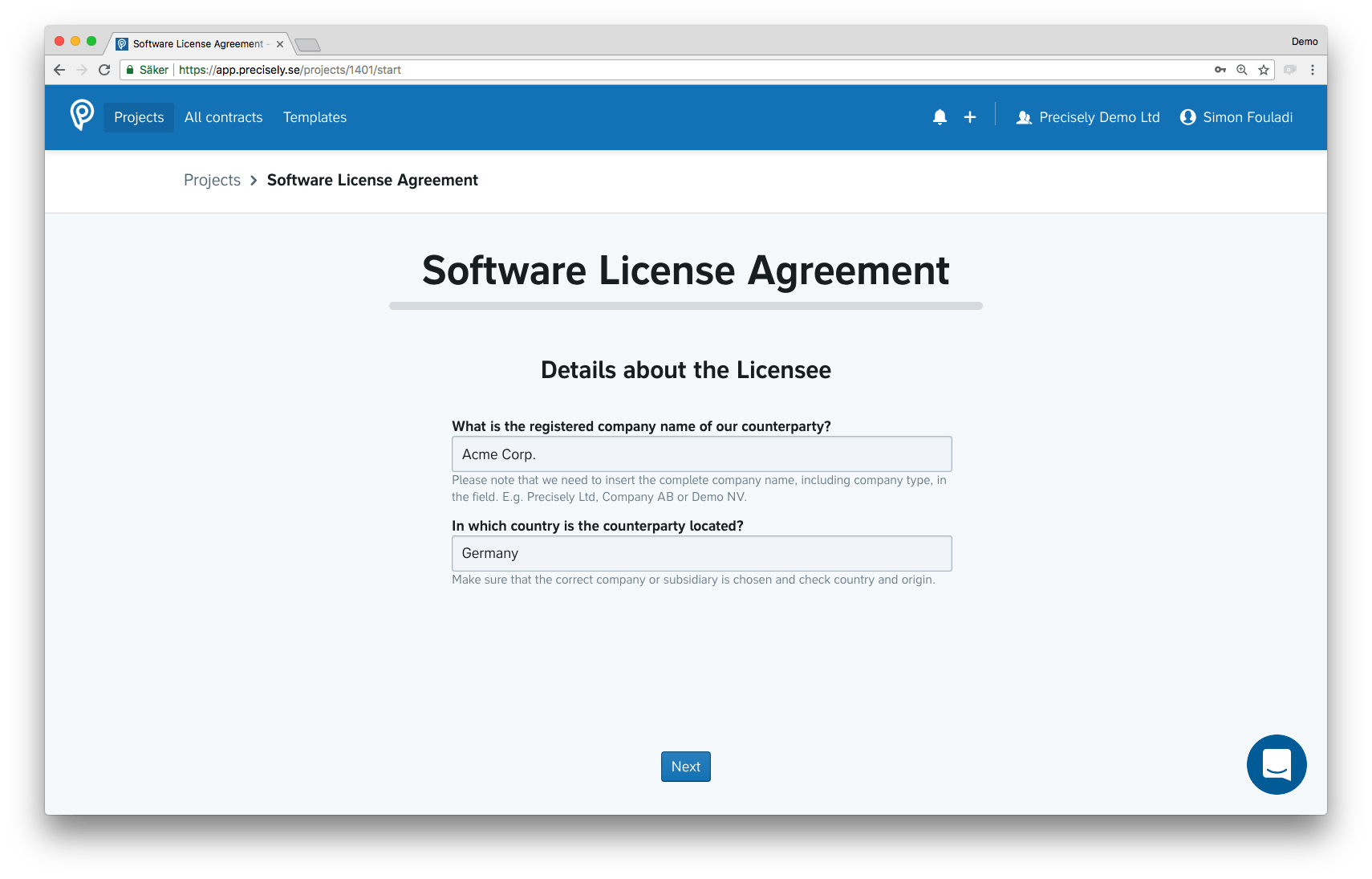Benefits of Contract Creation and Drafting Software

If you’re working within legal, compliance, deal making or procurement, chances are you’re putting an unnecessary amount of time and effort into contract drafting and contract creation. Dedicated contract creation and drafting software intends to tackle the ineffective traditional ways of executing these processes.
Drafting and creating contracts manually is inefficient, time-consuming and unreliable. This applies even though many businesses use digital tools such as Word or other text editing software to support the drafting process.
Let’s take a deeper look at contract creation and drafting, and what you’re able to do with the help of automated contract drafting and contract creation software.
The problems of traditional contract drafting and creation
To ensure legal compliance, and accelerate drafting and contract creation, your legal department (or external legal advisor) has most likely created a set of templates to be used by different departments throughout your company. Generally, the templates are created in rich text editors, with Microsoft Word being the weapon of choice.
Although Word is an excellent software for editing text, it’s not created for document assembly.
Although Word is an excellent software for editing text, it’s not created for document assembly. Once the template is created and distributed to the different departments, its shortcomings become the most apparent.
As the document can be edited freely by anyone (at least the free-text fields in case the document is locked for changes), the legal department lose control of the terms and thus can’t guarantee that the contract is finalized as intended, exposing the company to major legal risks.
Furthermore, when you create a contract based on a template, you typically need to do quite a bit of copying and pasting to finalize the contract. Then, in order to make sure that everything is correct, you proofread the entire document one, two, three or maybe even more times. Because, well, just a minor contractual error can result in major, expensive damages to your business.
Do we need to conclude that the process is unnecessarily time-consuming too?
An introduction to contract creation and drafting software
We’ve established that the traditional ways of producing templates and creating contracts based on those templates are wasteful and unreliable processes. But, more importantly, what differs when using a contract creation and drafting software? How do they work and what are the benefits of using one?
Limitations of traditional document assembly & document automation software
To begin with, contract creation and drafting software have been around for many years. Also known as document automation, or document assembly, most solutions intend to accelerate contract creation speed – and minimize human errors in the drafting process.
Nevertheless, traditional, outdated software solutions require extensive IT knowledge to set up and maintain the system. Some even require programming skills, or frequent local installations of updates, resulting in even more resources wasted than profits gained from implementing the solution.
Consequently, in these situations, drafting a contract based on a Word-template could even be easier than using the system.
Of apparent reasons, these hurdles and difficulties in relation to template maintenance have fundamentally decreased document automation project’s long-term viability and return on investment.
Some even require programming skills, or frequent local installations of updates, resulting in even more resources wasted than profit gained from implementing the solution.
As a general principle to apply when choosing contract creation and drafting software, let your least tech-savvy colleague’s participate in a training session with the software provider’s sales rep. Do they understand how to set up a template in the software after a couple of hours of training? Yes? Then you’re likely to have your winner.
Furthermore, cloud-based solutions will overcome many obstacles relating to IT maintenance. All updates to your templates will typically be automatically distributed too, making it possible to ensure that the latest version always is in use.
Gratefully, approximately 90 percent of the contract automation tools today are made available through the cloud, so you won’t have any trouble finding one (IACCM–Capgemini Automation Report, 2018).
Dynamic questionnaire-based contract creation
There are many things to take into account when choosing contract creation and drafting software. Different departments and roles have different drivers. The legal department prioritizes control and legal compliance, whereas sales will have ‘more deals done, quicker’ as the primary focus.
From a change management perspective, you must always have these drivers in mind. In case you cannot fulfill each department’s drivers, you will experience resistance internally, and the system won’t be used to the extent you initially intended it to be used, which results in a limited ROI.
To my knowledge, in relation to contract drafting and creation software, the best way of combining the legal department’s drivers with operational department’s equivalents is to implement solutions where the drafting is made through a dynamic questionnaire. In the end, this allows operational functions to draft compliant contracts superfast simply by answering a few questions.
The questions correspond to rules decided by the legal department, which on beforehand can decide precisely what changes to the contract are allowed, meaning that they stay in control of the final versions of each contract. Consequently, legal can decentralize contract creation, but stay in control.
Finally, it allows the legal department to put full focus on complex and strategically important legal work, rather than shuffling paper and reviewing recurring contracts.
How does this work in practice? Since your template often needs customization to suit each individual case, many templates will include certain variables that change from contract to contract.
This could, for instance, relate to details about your counterparty, what products that are sold, the employee’s salary, governing law or alternative clauses depending on if you want a seller or buyer-friendly version of the agreement.
In turn, each variable will correspond to a question to be answered by the person who wants to draft the contract in each individual case (e.g. What is the registered company name of our counterparty?).
Dynamic questionnaires allows for incredibly efficient and user-friendly contract creation
The answer to the questions will populate all relevant fields in the template, and the most sophisticated solutions allow answers to activate or deactivate certain clauses based on preset conditions. For instance, different clauses will appear the applicable governing law.

In the end, dynamic questionnaires allow for incredibly efficient and user-friendly contract creation, allowing anyone in your organization to create even the most complex contracts without errors even without legal knowledge.
Thus allowing for both easy and safe creation of contracts while freeing up time for yourself and/or the legal department.
Efficiency through automation — integrated systems
There are many more processes revolving around contract creation and contract drafting software than the actual production of contracts. In the best possible scenario, you will want to limit the number of software systems used. Especially since management across multiple systems will increase the complexity and, accordingly, decrease adoption of the system.
To maximize ROI, look for contract drafting software that, as a bare minimum, offers integrated e-signatures, automated approvals and a sophisticated document repository.
Furthermore, in order to ensure that the templates remain safe, correct and compliant, it’s essential that the system allows customization of end-user permissions to limit who gets to make changes to the contracts and who has access to each document.
Happy contracting,
Simon


